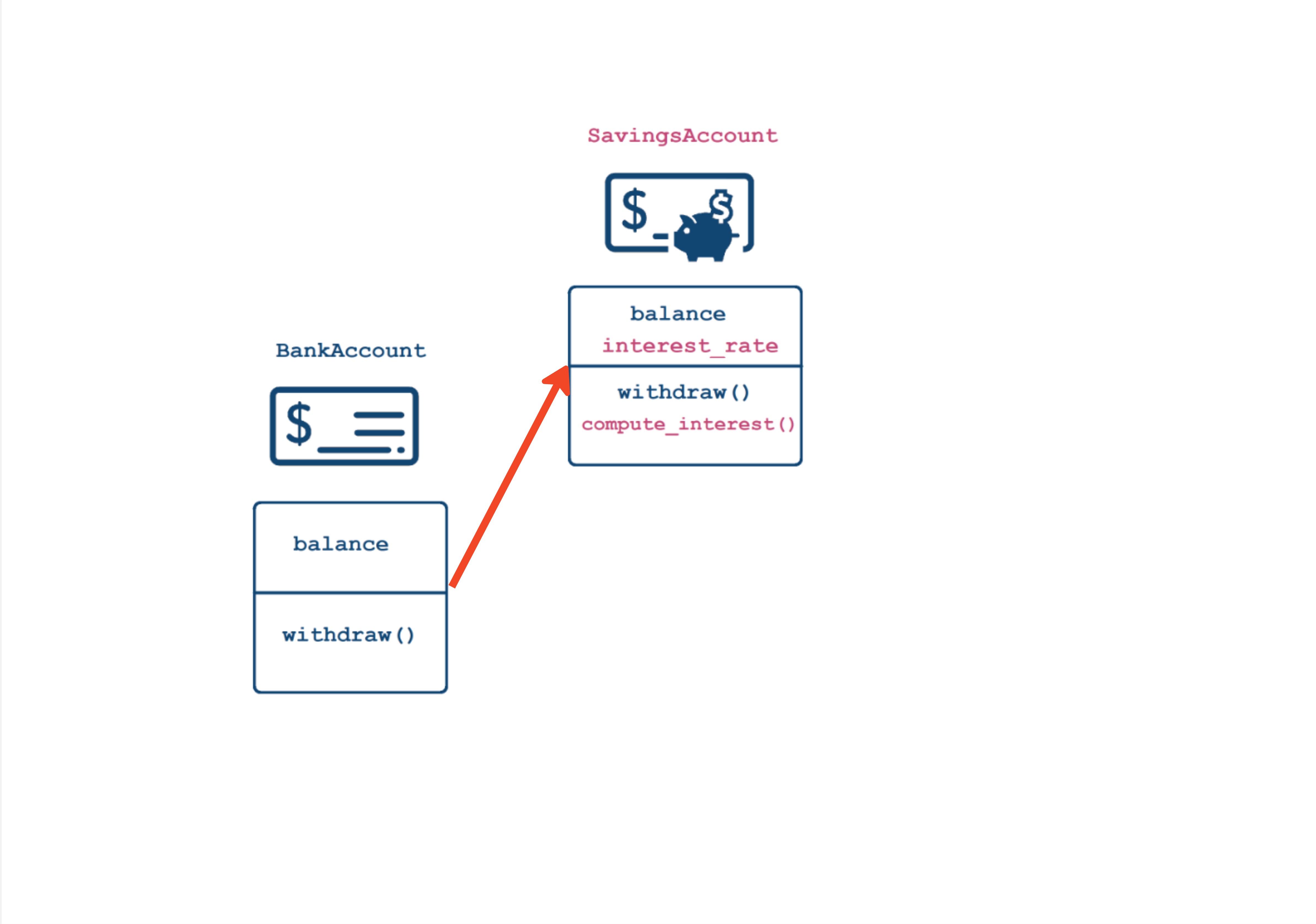Inheritance comparison and string representation
Introduction to Object-Oriented Programming in Python

George Boorman
Curriculum Manager, DataCamp
Comparing objects from different classes
class Customer:
def __init__(self, acc_id, name):
self.acc_id, self.name = acc_id, name
def __eq__(self, other):
# Returns True if the objects have the same attributes
# and are of the same type
return (self.acc_id == other.acc_id) and (self.name == other.name)\
and (type(self) == type(other))
Comparing objects with inheritance
What if one object inherits from the class of the other object?
Bank and savings accounts

__eq__ in parent/child classes
class BankAccount:
def __init__(self, number, balance=0):
self.balance = balance
self.number = number
def withdraw(self, amount):
self.balance -= amount
# Define __eq__ that returns True
# if the number attributes are equal
def __eq__(self, other):
print("BankAccount __eq__() called")
return self.number == other.number
class SavingsAccount(BankAccount):
def __init__(self, number, balance, interest_rate):
BankAccount.__init__(self, number,
balance)
self.interest_rate = interest_rate
# Define __eq__ that returns True
# if the number attributes are equal
def __eq__(self, other):
print("SavingsAccount __eq__() called")
return self.number == other.number
Comparing parent and child objects
ba = BankAccount(123, 10000)
sa = SavingsAccount(456, 2000, 0.05)
# Compare the two objects
ba == sa
SavingsAccount __eq__() called
False
sa == ba
SavingsAccount __eq__() called
False
Printing an object
class Customer:
def __init__(self, name, balance):
self.name, self.balance = name, balance
cust = Customer("Maryam Azar", 3000)
print(cust)
<__main__.Customer at 0x1f8598e2240>
a_list = [1,2,3]
print(a_list)
[1, 2, 3]
__str__()
print(obj),str(obj)
print(np.array([1,2,3]))
[1 2 3]
str(np.array([1,2,3]))
'[1 2 3]'
- informal, for end user
- string representation
__repr__()
repr(obj), printing in console
repr(np.array([1,2,3]))
'array([1,2,3])'
np.array([1,2,3])
array([1, 2, 3])
- formal, for developer
- reproducible representation
- fallback for
print()
Implementation: repr
class Customer: def __init__(self, name, balance): self.name = name self.balance = balance def __repr__(self):# Notice the '...' around name return f"Customer('{self.name}', {self.balance})"cust = Customer("Maryam Azar", 3000) # Will implicitly call __repr__() cust
Customer('Maryam Azar', 3000)
Implementation: str
class Customer:
def __init__(self, name, balance):
self.name = name
self.balance = balance
def __str__(self):
cust_str = f"""
Customer:
name: {self.name}
balance: {self.balance}
"""
return cust_str
cust = Customer("Maryam Azar", 3000)
# Will implicitly call __str__()
print(cust)
Customer:
name: Maryam Azar
balance: 3000
Let's practice!
Introduction to Object-Oriented Programming in Python

